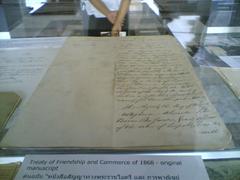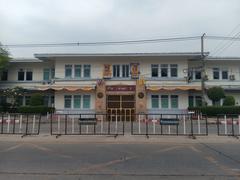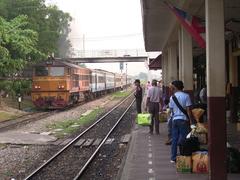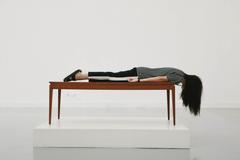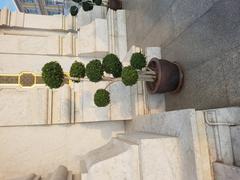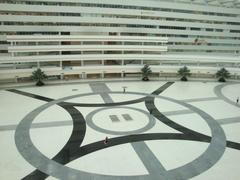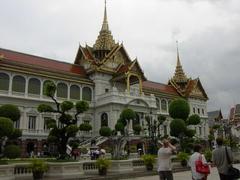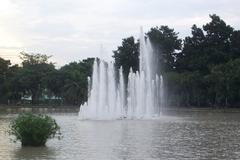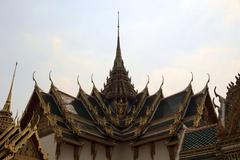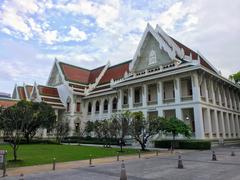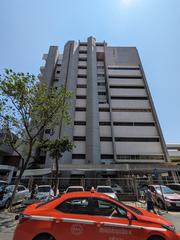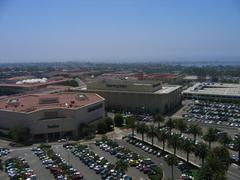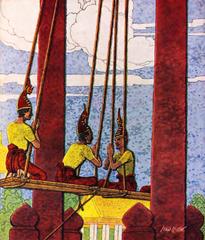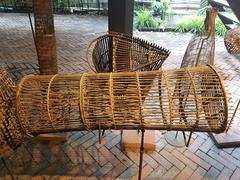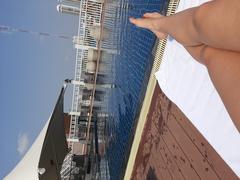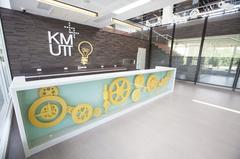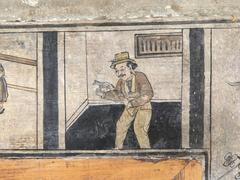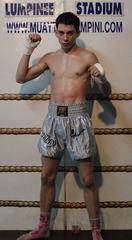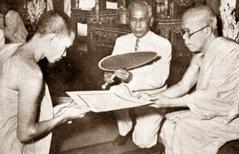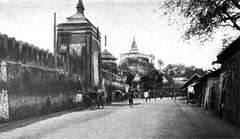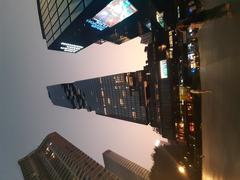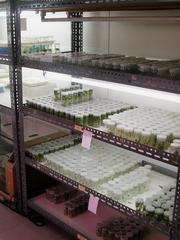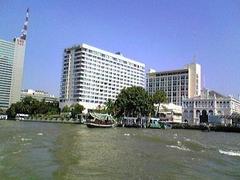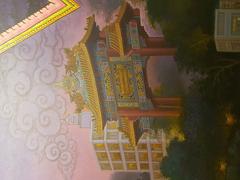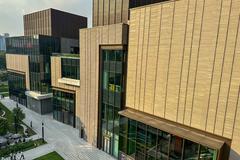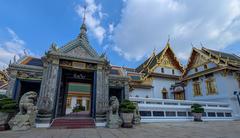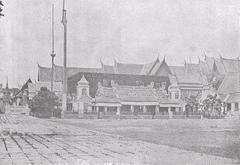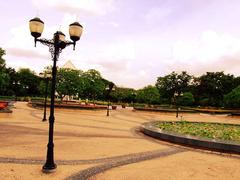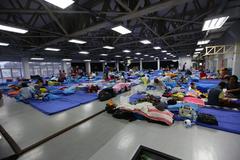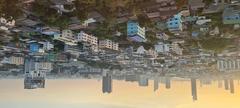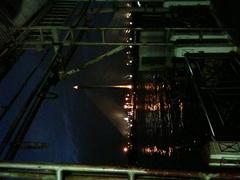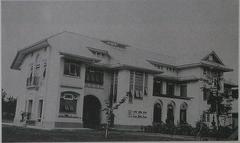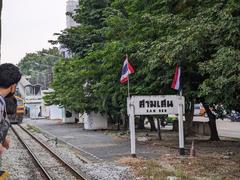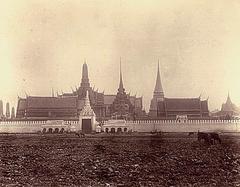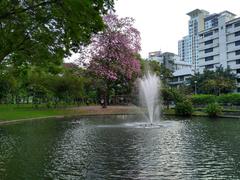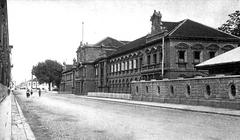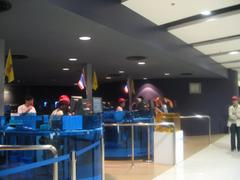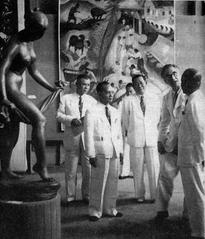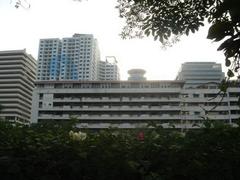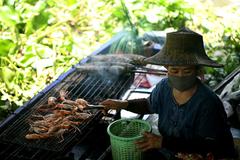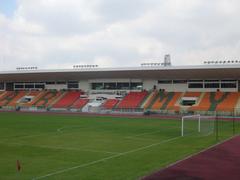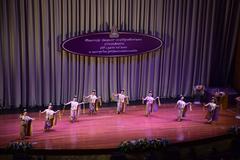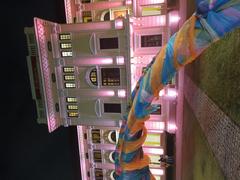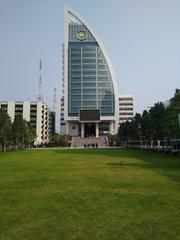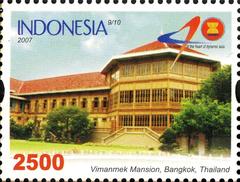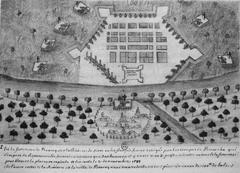Bangkok National Museum Visiting Hours, Tickets, and Travel Guide
Date: 14/06/2025
Introduction
The Bangkok National Museum is Thailand’s premier museum and the largest institution of its kind in Southeast Asia. Established in 1874 by King Chulalongkorn (Rama V) to showcase the royal collections of King Rama IV, the museum now offers visitors a comprehensive journey through Thai history, art, and royal heritage. Housed in the historic Front Palace (Wang Na) in the Phra Nakhon district, the museum is renowned for its remarkable Rattanakosin-era architecture, blending traditional Thai motifs with European influences. Its collections span prehistoric times to the Rattanakosin era and include the UNESCO-registered King Ram Khamhaeng Stele, Buddhist sculptures, royal regalia, and artifacts representing the cultural diversity of Thailand. The museum also plays a vital role in preserving intangible heritage through cultural events and artisan collaborations. Conveniently located near the Grand Palace, Wat Phra Kaew, and Wat Pho, it is an essential stop for anyone seeking to understand the rich cultural tapestry of Bangkok. This guide provides in-depth information on visiting hours, ticketing, accessibility, guided tours, travel tips, and nearby attractions, ensuring a rewarding museum experience (First Time Travels, Museum Thailand, National Museum Volunteers).
Table of Contents
- Introduction
- Origins and Historical Development
- Architectural Significance and Layout
- Major Artifacts and UNESCO Recognition
- Visiting Hours and Tickets
- Travel Tips and Accessibility
- Guided Tours, Events & Photo Opportunities
- Nearby Attractions
- Visitor Amenities and Services
- Frequently Asked Questions (FAQ)
- Conclusion and Call to Action
- References
Origins and Historical Development
Founded in 1874 by King Rama V, the Bangkok National Museum was intended to display the royal collection of King Rama IV. Initially housed in the Grand Palace’s Concordia Pavilion, it was soon relocated to the Front Palace grounds, a site formerly used as the residence of the vice king or crown prince. In 1934, King Rama VII designated the entire Boworn Sathan Mongkol Palace complex as the national museum, establishing its current identity (First Time Travels, Museum Thailand, National Museum Volunteers). Over the years, the museum’s collections have expanded to include thousands of artifacts from every era of Thai civilization, as well as Asian Buddhist art, making it a cornerstone of cultural preservation.
Architectural Significance and Layout
The Front Palace (Wang Na) Complex
The museum’s home is the historic Wang Na, constructed in 1782 and expanded during the late 19th century. The Boworn Sathan Mongkol Mansion, once the vice king’s residence, is the architectural centerpiece, exemplifying a blend of Thai and European styles.
Key Architectural Features
- Sivamokhaphiman Hall: Once the vice king’s audience hall, now houses the Thai History Gallery, offering a chronological walk through Thai history.
- Buddhaisawan Chapel (Phra Thinang Phutthaisawan): Built in 1787, this chapel enshrines the sacred Phra Buddha Sihing image and features murals depicting the Buddha’s life.
- The Red House (Tamnak Daeng): A teak residence showcasing aristocratic life in the early Rattanakosin era.
- Funeral Royal Chariot Hall: Displays ornate royal funeral chariots used in state ceremonies.
The museum complex is arranged around open courtyards, with each building dedicated to specific historical periods or themes. The combination of multi-tiered roofs, intricate woodwork, neoclassical columns, and decorative stucco highlights the evolution of Thai architecture (Museum Thailand, First Time Travels, Rachel’s Ruminations).
Major Artifacts and UNESCO Recognition
- King Ram Khamhaeng Stele: A 13th-century stone inscription, recognized by UNESCO as part of the Memory of the World Programme, notable for being one of the earliest examples of Thai script (National Museum Volunteers).
- Buddhist Sculptures: Masterpieces from the Dvaravati, Srivijaya, Lopburi, Sukhothai, Ayutthaya, and Rattanakosin periods.
- Royal Regalia and Ceremonial Objects: Including crowns, swords, and garments used in royal ceremonies.
- Ethnological Collections: Items from Thailand’s regional cultures, such as textiles, musical instruments, and ceremonial masks.
- Repatriated Treasures: Recent additions like the “Golden Boy” and “Kneeling Lady” bronze statues, returned to Thailand in 2024.
The museum’s Asian Buddhist art collections from India, China, Vietnam, Indonesia, and Cambodia highlight Thailand’s historic role as a crossroads of regional culture (National Museum Volunteers).
Visiting Hours and Tickets
- Opening Hours: Wednesday to Sunday, 9:00 AM – 4:00 PM (last ticket sold at 3:30 PM). Closed Mondays, Tuesdays, and select national holidays (National Museum Volunteers).
- Admission Fees: 200 THB for foreign visitors, 30 THB for Thai citizens, free for children under 15. Discounts for students, seniors, monks, and ICOM/ICOMOS members (Museum Thailand).
- Tickets: Purchase onsite in cash. Online pre-booking is not typically available.
Travel Tips and Accessibility
- Getting There: Located on Na Phra That Road, Phra Nakhon District. Accessible by taxi, tuk-tuk, or Chao Phraya Express Boat (disembark at Tha Chang Pier or Tha Phra Athit/Banglamphu Pier) (First Time Travels, GuideTourism).
- Accessibility: Wheelchair ramps and accessible restrooms are available in some areas. Historic buildings may have uneven floors and steps. Contact staff for assistance (CN Traveler).
- Dress Code: Modest attire is required—shoulders and knees covered—especially in sacred areas like the Buddhaisawan Chapel (TravelTriangle).
- Climate: Bangkok is hot and humid year-round. Bring water, dress lightly yet respectfully, and carry an umbrella during the rainy season (Thrillark).
Guided Tours, Events & Photo Opportunities
- Free Guided Tours: Offered in English, French, German, and Japanese, typically on Wednesdays and Thursdays at 9:30 AM. Highly recommended for deeper insight (National Museum Volunteers).
- Special Events: The museum regularly hosts cultural performances, workshops, and temporary exhibitions. Check the official website or entrance for current schedules (Asia Highlights).
- Photo Spots: Photography is allowed in outdoor areas and courtyards. Interior gallery photography is usually restricted—observe posted signs. Popular locations include the Buddhaisawan Chapel murals, the Red House, and the royal chariot displays.
Nearby Attractions
- Grand Palace: Bangkok’s most iconic royal complex, just a short walk away.
- Wat Phra Kaew: Temple of the Emerald Buddha, within the Grand Palace grounds.
- Wat Pho: Temple of the Reclining Buddha, famous for its massive Buddha statue.
- Khao San Road: Popular backpacker area with vibrant street life.
- National Theatre and Thammasat University: Adjacent cultural and educational landmarks (Trip.com).
Visitor Amenities and Services
- Gift Shop: Books, souvenirs, and artisan crafts are available.
- Restrooms & Seating: Facilities are distributed throughout the grounds; seating within galleries is limited.
- Food & Refreshments: A coffee shop is located near the entrance; snack vendors are available outside. There is no full-service restaurant onsite.
- Baggage Storage: Check room available near the entrance.
- Family-Friendly: Children under 15 enter free; supervision is encouraged due to valuable artifacts.
- Parking: Limited onsite parking; public transport is recommended.
Frequently Asked Questions (FAQ)
Q: What are the Bangkok National Museum visiting hours?
A: Wednesday to Sunday, 9:00 AM–4:00 PM; last entry at 3:30 PM.
Q: How much are tickets?
A: 200 THB for foreigners, 30 THB for Thai citizens, free for children under 15.
Q: Are guided tours available?
A: Yes, free tours in several languages are offered on specific days.
Q: Is photography allowed?
A: Permitted outdoors and in certain areas; restricted inside galleries.
Q: Is the museum accessible for people with disabilities?
A: Many areas are accessible, but some historic sections have steps or uneven floors.
Q: What should I wear?
A: Modest clothing covering shoulders and knees is required.
Q: Are tickets sold online?
A: Typically, tickets are purchased onsite.
Conclusion and Call to Action
The Bangkok National Museum presents an unparalleled opportunity to explore Thailand’s rich history, artistic traditions, and cultural achievements. With convenient visiting hours, affordable tickets, and a central location near other major Bangkok historical sites, it is a must-visit for travelers of all interests. To get the most from your visit, arrive early, join a guided tour, and plan to explore nearby landmarks.
For ongoing updates, digital maps, and interactive audio tours, download the Audiala app. Also, explore our related articles on Bangkok’s historical sites and follow us on social media for the latest travel tips and cultural insights.
